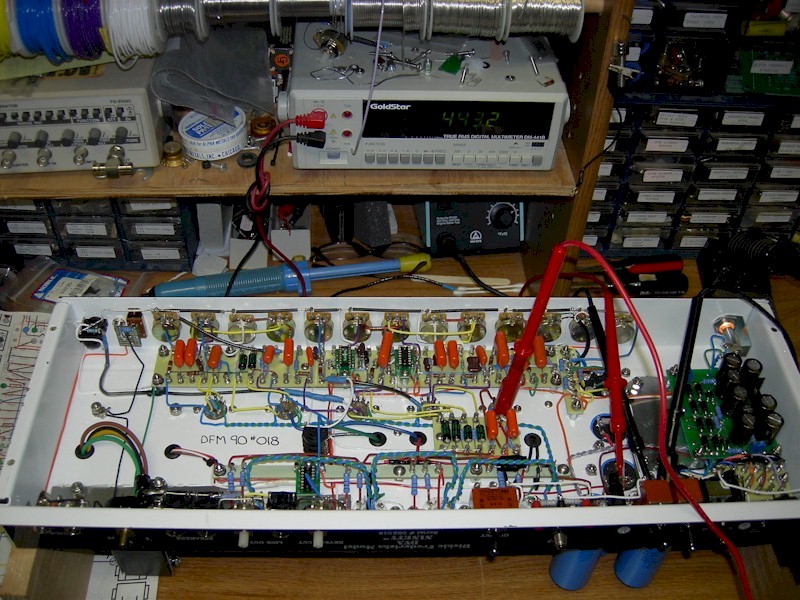Here we are, 3 shielded cables short of wiring in
the trannies. I've been through the circuit checking
that everything matches the layout drawing some many times I need to
look it over with fresh eyes.
So, I'm taking five to watch the Belmont and have a bite to eat!
Wow, Big Brown, Big Brown Turd might be the legacy, huh?
Click the images for a full screen look.
 |
Well this is the moment of truth, the first power
up is always met with just a touch of anxiety, for me anyway!
As I mentioned above, I've traced the circuit, it all looks good,
and the only thing that could go wrong is a
bad cap or resistor. If we had a bad filter cap that could be a bit
exciting so... I like to bring the amp up to
temp, as I like to call it, SLOWLY! At this point there are no
valves in, we just want to be certain that the
power supply, and the bias and control board, are working properly.
I start with the variac at 0 and bring it
up in 10 volt increments. At this point I want the room dead quiet,
no distractions, and your sense of smell
could well prevent disaster. At low voltage any bad part will start
to heat up, instead of, hopefully, failing
catastrophically. I check all voltages; each stage of the power
supply and the negative & positive bias, and
the switching supply, then add 10 more volts, and check again. Once
we reach full voltage I like to let the amp
sit and cook. Now I'm not one who adheres to the notion that the
filter caps must be "formed". But certainly,
I don't want to stress the caps with full voltage until I've brought
them up slowly a few times.
If you look closely you can see the amp is idling
at 443 volts. I've got the variac set at 100 volts ac. The Merc
MP100-67 should give us 525 volts of HT, the first two stages of the
power supply will handle well over that,
but the rest of the supply is 500v caps, so until we have some
current draw we don't want to stress the rest of
the supply.
Well its time to put some valves in and see what
we got! Stay tuned...